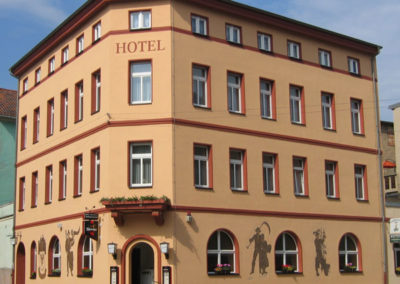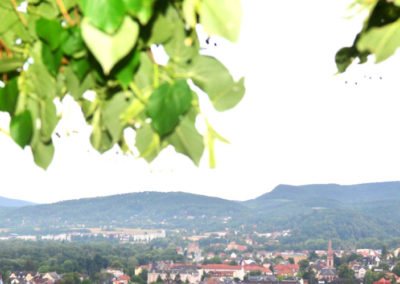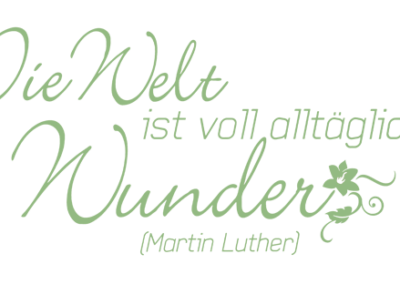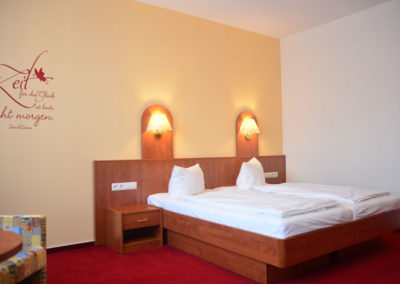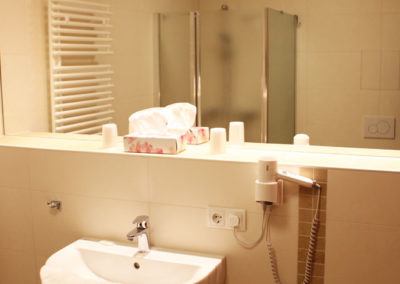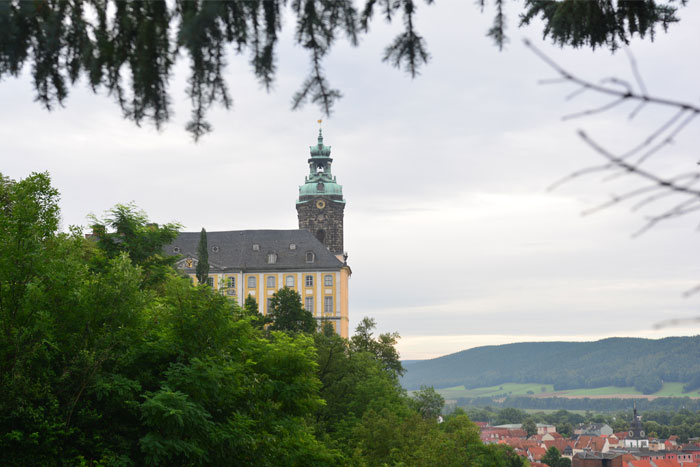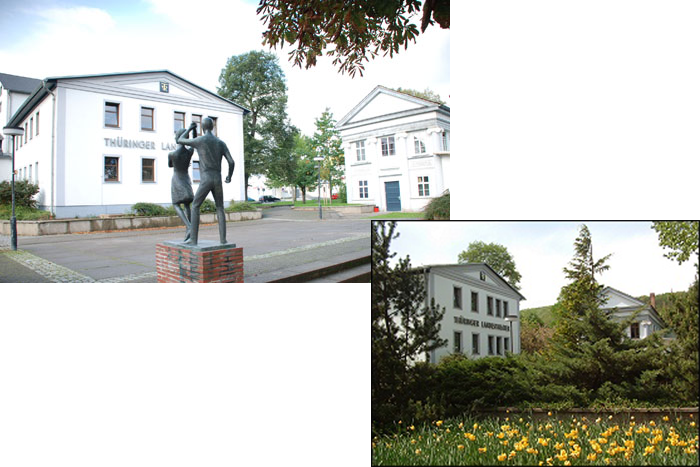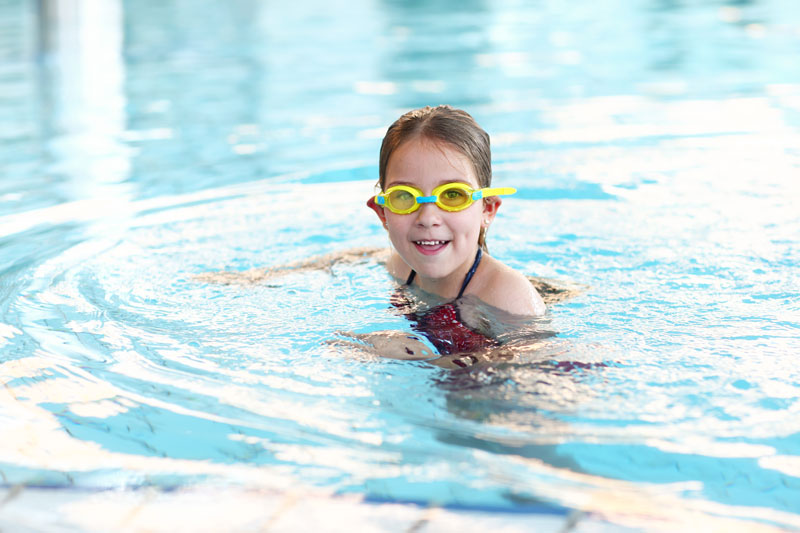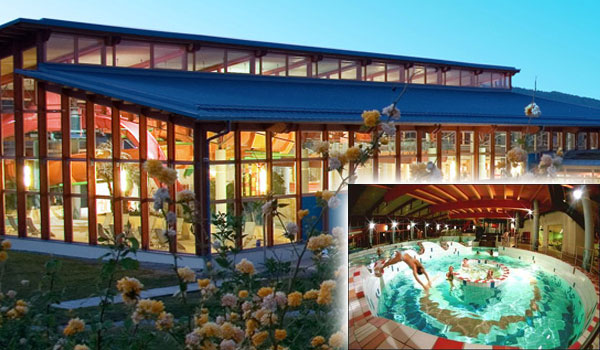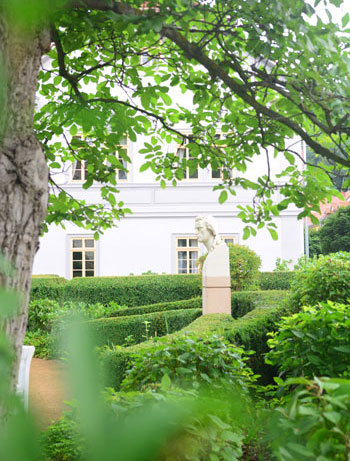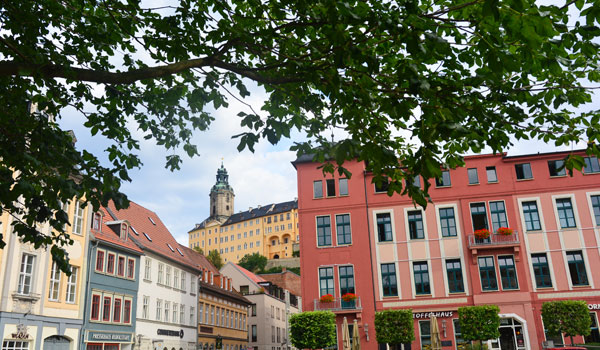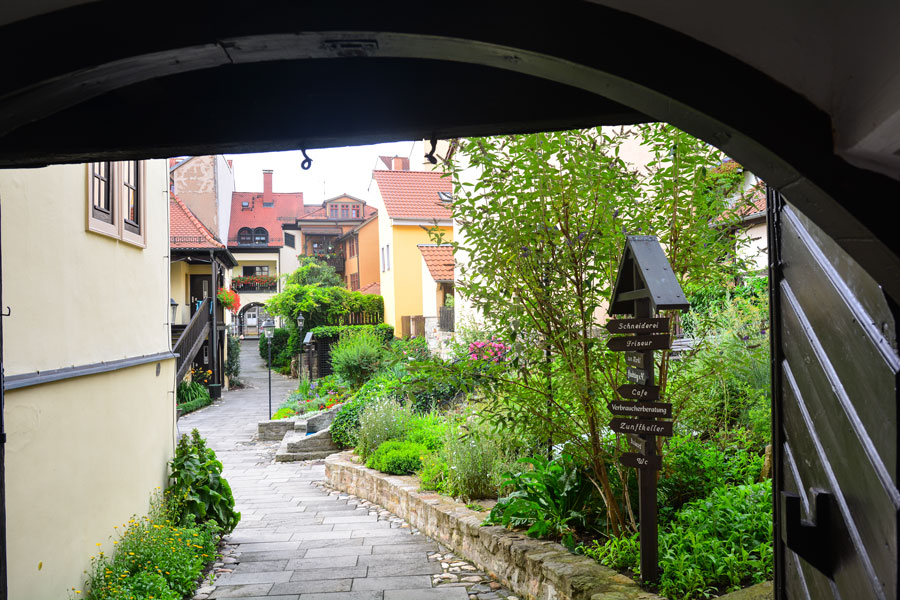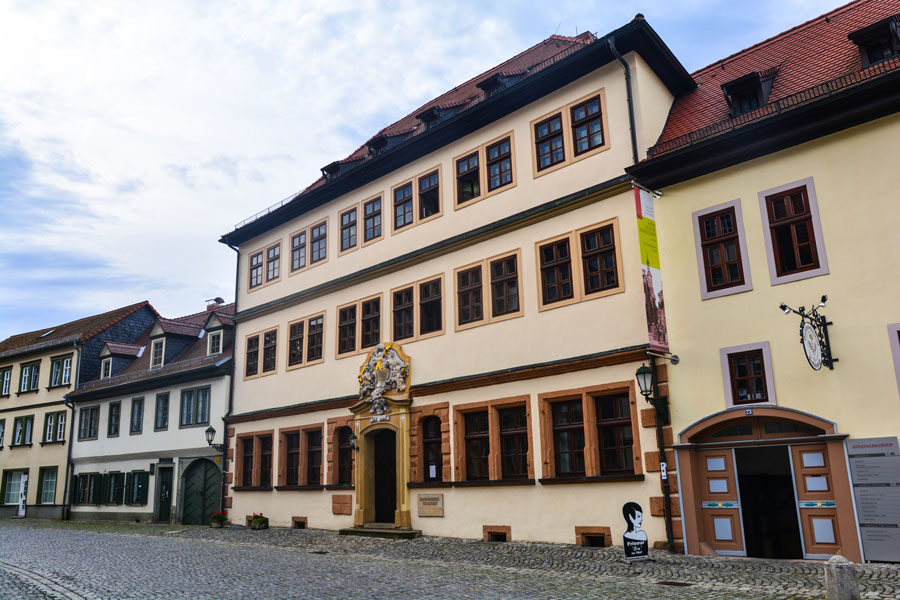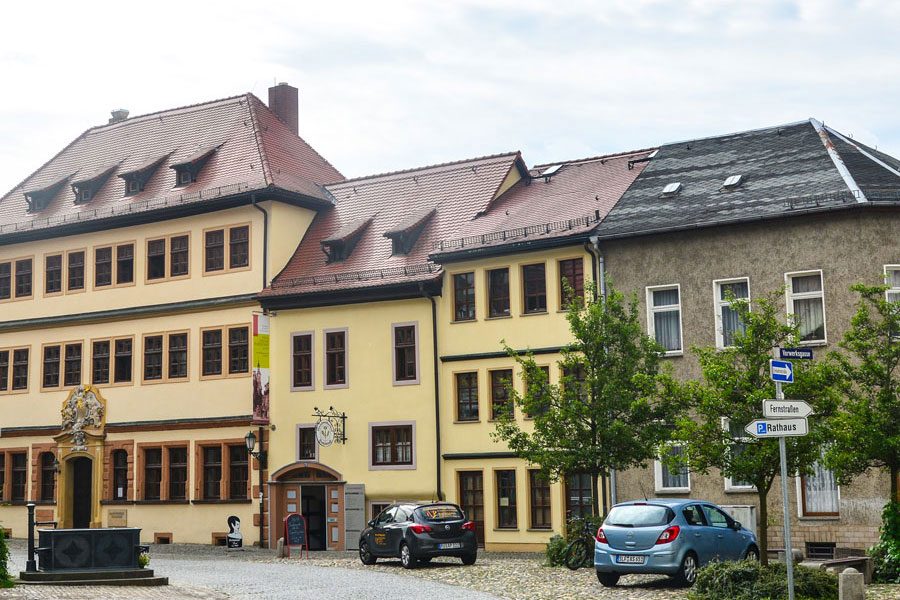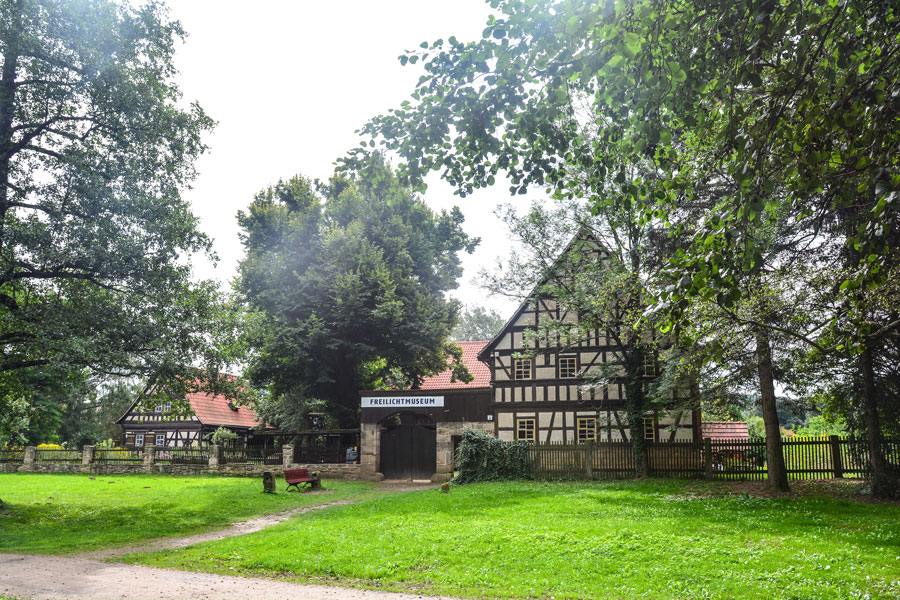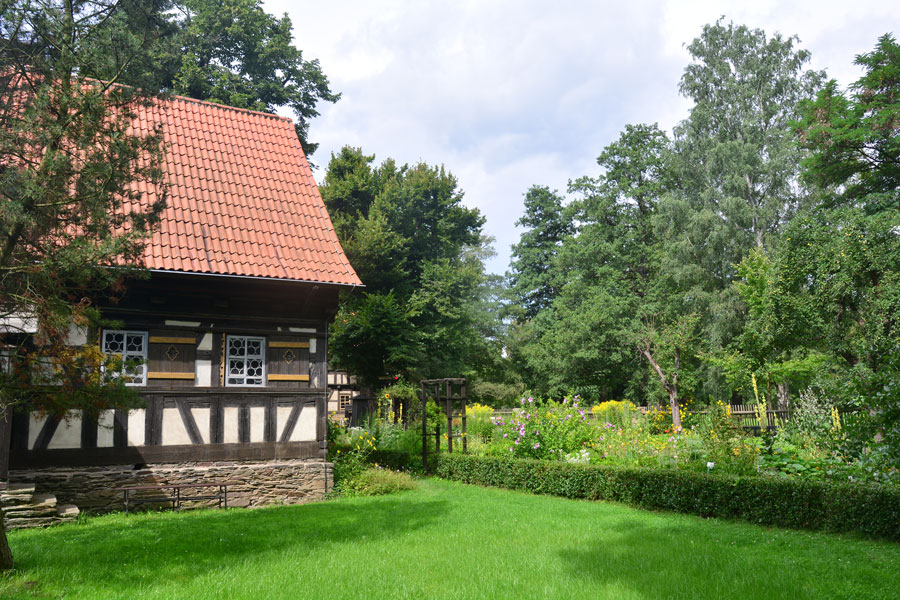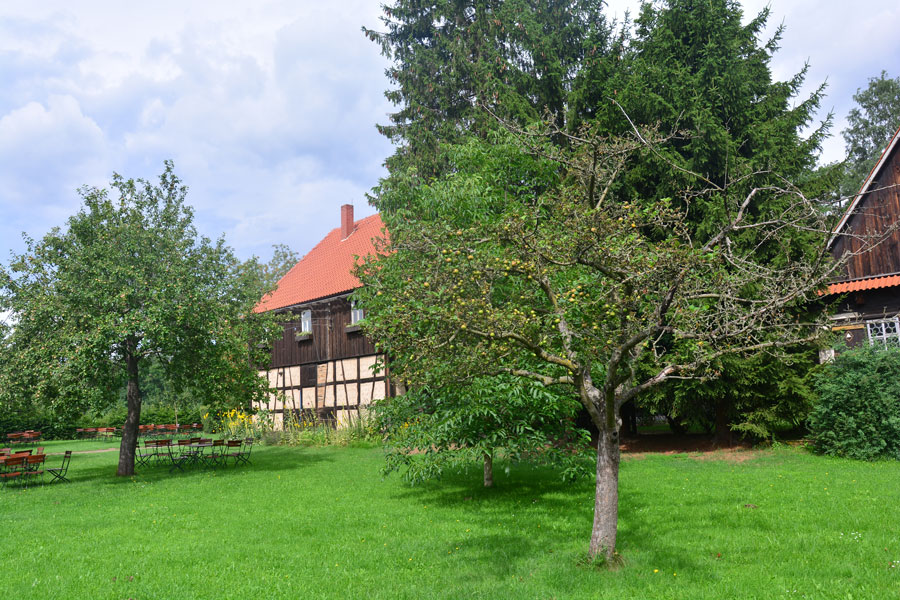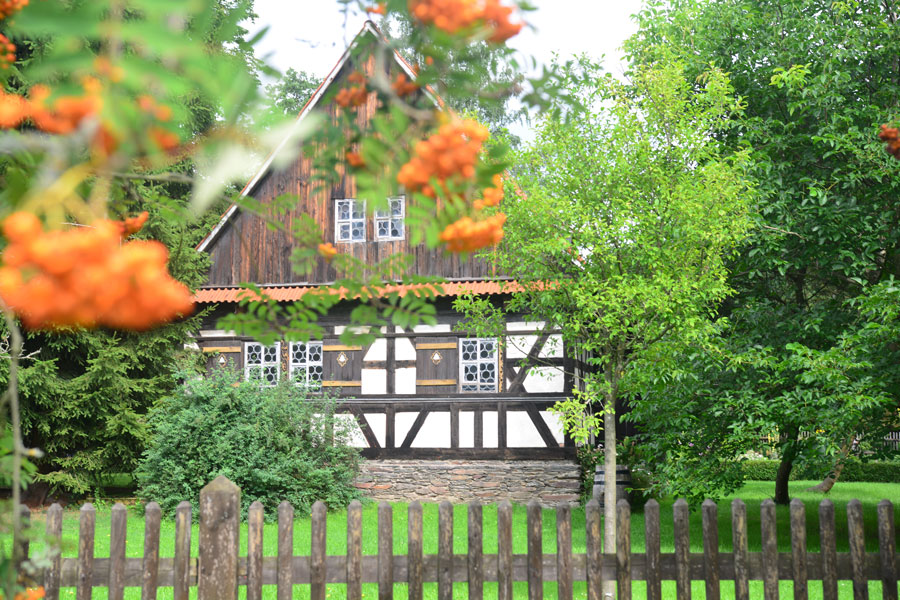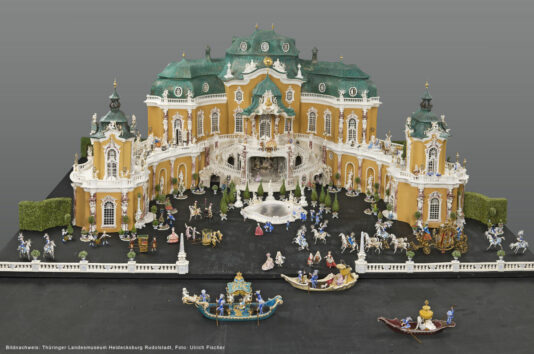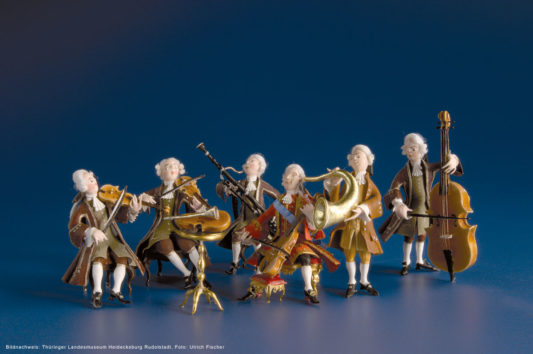The capital Rudolstadt
In 776 the name Rudolstadt first appeared in a deed of donation from Charlemagne to Hersfeld Monastery. It was once a Franconian-Sorbian-Thuringian settlement and came into the possession of the Counts of Schwarzbug around 1340. Rudolstadt has been a town since 1326 and around 1571 the beautiful residential town became the headquarters of the Schwarzburg-Rudolstadt line.
In the years that followed, this city developed into one of the most culturally and politically important centres. The name is inconceivably linked to German art and intellectual history.
One can say that it is a city full of life and charm. It is also an ideal starting point for excursions into beautiful surroundings.
The tourist information is only a few minutes walk away. There you will receive further tips and brochures for planning your tours in our beautiful Rudolstadt!
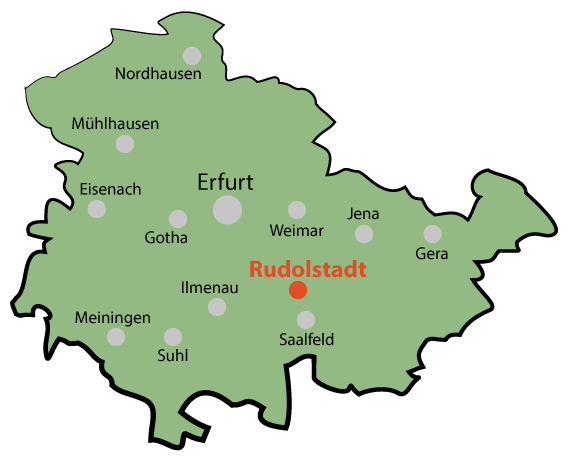
The Heidecksburg
Heidecksburg Castle – correct: Heidecksburg Castle – is a landmark of the city of Rudolstadt in Thuringia. It is a magnificent baroque castle from the second half of the 18th century, built on the site of a 13th century castle. In the following centuries several successor buildings, including castles and palaces, were built as a result of war damage, fires etc.
Today Heidecksburg Castle is a popular tourist attraction and a highly frequented excursion destination, thanks both to its imposing exterior and the valuable architectural and cultural-historical treasures inside the building. Among other things, the princely living and festival rooms, an extensive weapons collection and the painting gallery can be visited in the castle. Heidecksburg Castle also contains a historical library and a unique collection of decorative porcelain. Constantly changing exhibitions complement the sights and attract visitors from near and far.
Furthermore, the castle is the seat of the Foundation of Thuringian Palaces and Gardens and the Thuringian State Museum.
The history of Heidecksburg
Already in the 13th century a castle of the Count of Orlamünde was situated on the grounds of today’s castle. This was acquired by the Count of Schwarzburg in 1334 and subsequently expanded. But only ten years later, in the course of the Thuringian count’s war, the castle was completely destroyed. Today, there are no visible remains of this “original development” of the site.
After the end of the war, a successor building was erected on the same site, but somewhat offset. This was located between the present centre of the Schlossplatz and the open-air stage. The new building, a relatively simple castle, lasted until 1573, before a devastating fire destroyed most of it. Today it is assumed that the round tower integrated into the royal stables still originates from the second castle.
From the remains left over from the fire, a renaissance castle with three wings was finally built, the size and location of which largely corresponded to the present building. But even this building was almost completely destroyed by fire in 1735. Thus, in 1737, the construction of a new baroque residence castle began, into which only the old guard building, parts of the south wing and the ribbed vault on the ground floor could be integrated. The result was a baroque representative building that lived up to the claim of the Schwarzburg-Rudolstadt family, who were elected princes in 1710.
The attractions of Heidecksburg Castle
Heidecksburg Castle is (and has always been) used for many purposes. The most important parts of the building themselves can be visited, but also the permanent exhibitions and temporary themed exhibitions. Here are some of the most important attractions in detail:
The Weapon Collection
With more than 4000 exhibits from the 15th to 19th centuries, the weapons collection housed at Heidecksburg Castle is one of the most extensive in Germany. It belongs to the Thuringian State Museum and was exhibited in the late Gothic vaulted hall of Heidecksburg Castle in recent years. However, the weapons collection is currently undergoing restoration, but is to be made accessible to the public again in 2017.
The Collection of Paintings
Heidecksburg Castle contains a collection of paintings by the counts and later princes of Schwarzburg-Rudolstadt. The foundation stone for this collection of paintings was laid as early as the 17th century, after which it was constantly expanded.
The “Rocco en miniature” exhibition
The fascinating world of the Rococo in small format, more precisely on a scale of 1:50. This interesting permanent exhibition is also located at Heidecksburg Castle. It consists of a fantasy world of two kingdoms, including several miniature castles including furnishings and inhabitants. This exhibition has been housed in the former princely court kitchen of the castle since 2007. Find out more here >
The Museum of Natural History
Already in the 18th century, the establishment of a princely cabinet of natural objects began at Heidecksburg Castle. The exhibition, which is now housed in a room on the upper floor of the north wing, reconstructs this natural collection and shows a collection from all three classical natural kingdoms, i.e. the kingdoms of stone, plants and animals.
As you can see, Heidecksburg Castle is well worth a visit today. Bring the necessary time with you, because there is a lot to experience! Within the framework of various guided tours and combined offers, everyone can see as much of Schloss Heidecksburg as they like.
The Theatre in Rudolstadt – A stage of superlatives
This theatre has a rich tradition. At the end of the 18th century Johann Wolfgang von Goethe managed his artistic fortunes and provided sophisticated entertainment. Today the stage has only 260 seats and is one of the best theatres in Thuringia. It is much more than just an insider tip.
The rich offer, which ranges from drama, opera, operetta to musical and ballet, is highly appreciated by the many visitors. The “Schminkkasten”, the smaller venue with hospitality next to the big house, invites to convivial evenings with mostly comedic pieces and musical-literary programs. In June/July you can admire the summer theatre in front of the enchanting scenery of the Heidecksburg. This is a wonderful experience for young and old. The theatre also has its own orchestra: the Thuringian Symphony Saalfeld-Rudolstadt. Their regular concerts enrich the cultural life of the region immensely.
Night after night the stage becomes the scene of perfectly staged sensory noise. When the curtain rises, a firework of sophisticated choreographies, breathtaking drama and unique stage technique is ignited.
Don’t miss Rudolstadt’s big visitor magnet!
The ultimate bathing fun between Saalfeld and Rudolstadt
The SAALEMAXX – a fun bath of a special kind
The leisure and adventure pool Saale Maxx offers visitors a maximum of sport, fun and relaxing peace and quiet. It is divided into the sub-areas – sports pool, adventure pool, sauna and wellness. The colourful and spacious leisure facility is located on a slope above the Rudolstadt arch of the Saalebogen. This offers a fantastic view of the Heidecksburg.
Here parents and children discover a variety of water attractions. The children can drift through the flow channel or allow themselves a cooling under the waterfall mushroom.
The wave pool gives you a feeling of the sea. The children are carried up by the waves while their parents relax in the surf. Furthermore, there is a sports pool, whirlpools and solariums to discover in the leisure and adventure pool Saale Maxx.
Splashing makes you hungry. In the catering area families can enjoy a snack or a little refreshment.
The Schiller House with Garden
History of the house
The Schiller House in Rudolstadt is one of the few authentic Schiller sites in Germany that did not fall victim to the bombs of the Second World War. It was once the former living quarters of the von Lengefeld and von Beulwitz families. During the restoration from 2005 to 2009, numerous restoration findings enabled a realistic reconstruction of the room structures and wall frames at the end of the 18th century.
On December 6, 1787 Friedrich Schiller spent the evening in the house of the Lengefeld-Beulwitz family and was impressed by the open-minded spiritual atmosphere. In the summer of 1788, during his first longer stay, his passion for Caroline and the still unmarried Charlotte von Lengefeld was awakened. From this passion developed a love for Charlotte, which led to her marriage in 1790.
This time inspired him to work as a writer and also gave him courage and confidence. The first personal meeting with Johann Wolfgang von Goethe also took place in this historic house on 7 December 1788.
The Rudolstadt Schiller Museum focuses precisely on that period in Schiller’s life. The physical well-being of the visitors is also well taken care of. The Restaurant & Cafe “Schiller!” radiates a modern flair. Here you will be provided with fresh, light cuisine and selected wines. The beer garden is a green oasis in the middle of the historic old town and invites you to stay for a while – no matter what time of day.
The historical old town of Rudolstadt
The old town of Rudolstadt lies below Heidecksburg and invites you to linger with its winding alleys, churches and Renaissance bourgeois houses.
Historical
The oldest settlement centre of Rudolstadt is the village settlement Altstadt. This area was originally inhabited by Slavic farmers and fishermen. It stretched in the east of today’s city approximately between Ludwigstraße, Pörze, Glockenstraße and Oststraße. Schönfeldt’sche Hof was the most important dairy in the old town. The Ludwigsburg is now located in its area.
It was an independent and political community, but had a close relationship with the city of Rudolstadt. On 20 September 1830 the village was incorporated into a residence.
The Craftsmen’s Yard
A successful combination of historical building substance and contemporary shopping and experience culture in Rudolstadt is the Handwerkerhof in the former Bernhardinerstift.
Here craftsmen from various trades have transformed a ruin into a wonderful ensemble of master craftsmanship. The craftsman’s yard offers a beautiful experience for all senses and is equipped for the disabled.
Photo studio Lösche
Photo exhibition at the Handwerkerhof
In 1851 the photo studio Lösche was founded in Rudolstadt and is still family-owned today. Thus it is the oldest still existing studio for portrait photography in Germany.
Historical city views, portraits of well-known personalities and exhibits on the development of photographic technology, can be viewed in the exhibition opened in June 2014.
Opening hours:
Tuesday to Sunday and public holidays
14:00 until 17:00 o’clock
Shops in the craftsmen’s yard
i-Tüpfel
For you and your home, tailor’s shop, home textiles and gifts
Owner: Karin Weide
Phone: 03672 – 312886
Handicraft in the craftsmen’s yard
Hairdressing salon “EVY”
Fashionable hairstyles and colour design for men, women and children
Owner: Evelyn Krause
Phone: 03672 – 422276
Beauty studio Jeanette Hensel
Facial and body treatment, consultation and sales, nail studio
Owner: Jeanette Hensel
Phone: 03672 – 412283
overnight accommodations
The Handwerkerhof offers overnight accommodation for journeymen.
Three small rooms, a kitchen, WC and shower are available.
You can register under: 03672 – 410377
The open-air museum in Heinrich-Heine-Park
Visitors to the romantic Heinrich-Heine-Park on the banks of the Saale River can gain an insight into the rural life of the past. The “Thuringian farmhouses” located there are considered to be the oldest open-air museum in Germany.
Visitors can admire and enjoy a picturesque courtyard landscape consisting of several buildings from the 17th and 18th centuries. In 1914/1915 the half-timbered buildings in the surrounding villages were demolished. Thanks to the “Marie Richter Foundation”, it is thanks to the nature-loving citizens of Rudolstadt that these houses were rebuilt in Heinrich Heine Park with great attention to detail.
hours of operation
April to October
daily from 11:00 to 18:00 o’clock
(admission until 17:30)
Prices Museum
Adults: 2,50 €
reduced rate
(Children, pupils, students, unemployed, severely disabled, owners of the Thür. Forest Card): 1,50 €
clusters
– from 20 persons: 1,50 € per person
– School classes from 20 pupils: 0,50 € per person
extended combination ticket
valid for Schillerhaus, Thüringer Landesmuseum Heidecksburg incl. exhibition “Rococo en miniature” and the open-air museum Thüringer Bauernhäuser: € 9.00
In the museum the rural life in the Thuringian region is illustrated by original furniture and utensils. The furnishings date from the 17th to the middle of the 19th century and impress with their beauty of form and practicality. The very personal relationship to the objects and furniture is shown by the paintings and the often humorous inscriptions.
The furnishing of an old village pharmacy is particularly worth seeing. With the available laboratory equipment, medicine bottles and mortars, it points to a special feature of the upper Black Valley: the oil trade. The so-called “hunchback pharmacists” earned their living with it. These oils are nowadays produced according to original recipes and some of them are available in the museum shop.
others highlights:
Guided tour with the hunchback pharmacist
“Crooks, horrors and ghosts”
Author: Frank Ash
Production: theater-spiel-laden
On this tour you will learn eerie, erotic, curious and delightful things from the tiny country from a humpback pharmacist from the Principality of Schwarzburg – Rudolstadt.
He tells secrets about everyday life and talks about the unique medical and oil trade in the green heart of Germany.
Meeting point is the courtyard of the Thuringian farmhouses.
Additional dates for groups of 10 persons or more are possible by arrangement with the Tourist Information (Tel.: 03672/486440).
Prices:
Adults: 7,00 €
Children from 7 years / pupils and groups from 20 persons: 6,00 €
Culinary guided tour
“Stomped, stirred, shaken – fun and interesting facts from the farmer’s kitchen”
This entertaining tour focuses on the kitchens and herb garden of the Thuringian farmhouses. As a visitor, you will learn that modern kitchen technology is based on very solid principles and that many practical kitchen appliances have their origins in the farmer’s kitchen.
In the wonderful herb garden you will learn everything about old useful and ornamental plants, as well as about some healthy herbs. At the end of the tour your hunger for knowledge will hopefully be satisfied and flat cakes will be made and eaten according to the original recipe.
Additional dates for groups of 10 persons or more are possible by arrangement with the Tourist Information (Tel.: 03672/486440).
Prices:
Adults: 7,00 €
Children from 7 years / pupils and groups from 20 persons: 6,00 €
Thuringia’s farmhouses are particularly popular in the summer months for open-air events of all kinds. The spectrum ranges from concerts with Dixieland and folklore to open-air cinema and summer theatre.
The Rudolstadt town church St. Andreas is a protestant, three-nave late Gothic hall church. It was built between 1463 and 1475 from a 12th century church. From 1634 to 1636 the church was rebuilt again and received an early baroque interior.
Places of interest in the church
Particularly impressive are the family tree of Count Albrecht VII of Schwarzburg and the “Schönfeldsche Epitaph”, which are depicted as high as a wall.
In the choir a tomb slab reminds of Countess Katharina von Schwarzburg.
The church also contains a two-roomed princely tomb, which has been in use since 1605. Here are still some coffins of the princes of Schwarzburg-Rudolstadt. Unfortunately, these coffins are badly damaged because the tomb suffered a series of burglaries.
In 1882 a Ladegast organ was installed. 2003-2005 it was restored by Hermann Eule Orgelbau.
The Bells
In the upper belfry of the tower hangs the late Gothic bell Osanna. It was cast in 1499 by Kurt Kerstan and weighs 2,300 kilograms. “Vivos voco, Mortuos plango, Fulgura frango.” “(“I cry out to the living, I lament for the dead, I break lightning.”)
The “Big Bell” weighs 5000 kilograms and is the heaviest free-swinging bell of a Protestant church in Thuringia. It was cast in 1635 by the foundry brothers Möhringk from Erfurt in the middle of the Thirty Years’ War.
The Marienglocke or also child training bell is a highly gothic work of art and is with 460 kilograms the lightest in the ringing. It dates from the 14th century.
The oldest of Thuringia’s still producing porcelain manufactories is the “Aelteste Volkstedt” and was founded as early as 1762. This foundation goes back to Georg Heinrich Macheleid. He unraveled the composition of the right porcelain mass, the “Arkanum”.
The artistic figures from the Aeltesten Volkstedter Porzellanmanufaktur achieve the highest prices in today’s antique trade and are very sought-after and respected by lovers. To this day, the freshness, grace and temperament of the famous lace figures have not been achieved anywhere in the world. To this day, every step in the production process, no matter how small, is performed by hand. Through this elaborate working method each figure receives the guarantee of harmony and perfection in form and colour.
The factory building of the oldest Thuringian porcelain manufactory from the 18th century was rebuilt in 2006/2007 to a “glass porcelain manufactory”. Here in Rudolstadt/Volkstedt, in addition to the “Aeltesten Volkstedt”, the manufactories “Unterweissbacher Werkstätten für Porzellankunst” with the art department “Schwarzburger Werkstätten”, “Scheibe-Alsbach” and “Plaue” found their new home.
Visitors are welcome to take a “look over the shoulder” of the artist to see how the works of art were created. The newly established museum reports on the development of the manufactory on the basis of samples, models, forms and historical documents.
Factory tours
You are very welcome to take part in a guided tour through the “Transparent Porcelain Manufactory” in order to follow the handicraft development of the works of art with a “look over the shoulder” of the artist.
Important notes:
Photographs may be taken during production.
It may NOT be filmed during production, not even with smartphones or other multimedia-capable devices.
Employees may only be photographed if they have agreed to the recording BEFORE.
Parking spaces for cars, buses and mobile homes are available. The guided tour through all departments is barrier-free and takes place on the ground floor.
Dates:
Monday to Saturday and only with agreement under the following telephone numbers:
+49 (0) 36 72 / 48 02 – 0 Central office
+49 (0) 36 72 / 48 02 – 15 Ms Eckert
You can see further offers on the following page: www.die-porzellanmanufakturen.de/werksfuehrungen
This small but fine doll museum can be found on the site of the former anchor works in Rudolstadt. More than 250 boys and girls can be admired here. You will be amazed how lifelike everything seems.
The natural joy of life, the charm and the charm of the up to 95 cm tall dolls will fascinate you. Each individual work of art appears as its own small “personality”.
The Rudolstadt Ringler Doll Museum is a real experience and worth a visit. It opens its gates gladly after advance reservation for visitor groups at 6 persons. Admission is free of charge. To the receipt and the extension of the museum one can leave however gladly a small donation.
Friedrich Schiller felt very comfortable in the nearby Volksstedt. He climbed the Bundsandstein rock above the Saale several times and wrote to Körner in 1788:
“The village lies in a narrow but lovely valley that flows through the Saale, between gently rising mountains. From these I have a very charming view of the city winding at the foot of a mountain.”
Schiller had some ardent admirers. One of them was Kammerrat August Karl Friedrich Werlich. By his personal employment and suggestion the memorial place “Schillershöhe” was created over several years and could be inaugurated on 9 May 1830 solemnly. With the establishment of the “Schillershöhe” much effort and work as well as great sacrifices of enthusiastic people were connected.
Today the “Schillershöhe” is still a place of remembrance for the guests of Rudolstadt but also for the inhabitants and a popular excursion destination at the “Rudolstädter Riviera”.
The Richtersche Villa is located in the Schwarzburger Chaussee. The fairytale-like, large house takes its name from its builder, the factory owner Friedrich Adolf Richter.
Richter established a very important industrial branch in Rudolstadt in the last century. He founded a pharmaceutical company. Under the trademark “Anker” the company also produced and sold sweets, music automatons and toys. The best-known products are the Anker stone boxes, which have been sold all over the world for many decades. Today the Anker Building Sets are experiencing a renaissance due to the resumption of production by the company “Anker Steinbaukasten GmbH”.
The “Ankerfreunde” continue the tradition of creative building with Anker bricks and other forms of play.
The history of the city library is closely connected with the school history in Rudolstadt, as the building was once built as a school.
Count Albrecht decided to build a school building for the growing number of schoolchildren. After Count Albrecht’s death, his son, Count Karl Günther, took over the supervision of the new building. The construction of the new school began in 1609 and was completed in 1611. The school was inaugurated under the name “Carolinum”.
The grammar school was founded in 1664 and was housed in a building that had previously been used as a citizen school. With the time the building could not withstand the growing requirements unfortunately any longer and so 1856 an extension took place at the north side, in order to create 4 further classrooms. To create a meeting room the room of the Prima was enlarged in 1871 and additionally a stage for the choir was created on the east side. However, after almost three hundred years of use, the necessary substance was simply lacking to enable modern teaching. For this reason, the first plans for a new building were made in 1889. This new building of the grammar school was ceremonially handed over in the Weinbergstraße in 1894.
The house at the school square could not be used for any other purpose.
The princes and their books
The history of the library can be traced back to the Reformation period. During this time Count Heinrich XXXII established a book collection in the Court Church, mainly with theological writings. This collection was systematically expanded over the years by the active interest of the Schwarzburg rulers.
Over the years the collection was extended more and more and had several locations. At some point, however, the collection was so large that a building was urgently needed. The efforts to find a suitable building could be completed relatively quickly, as the old grammar school was perfectly suited for this use. In 1896 the school moved in and since then the municipal library of Rudolstadt is located at the school square.
To learn more about the history of today’s city library, you are welcome to visit the library’s website or come and visit in person.
The opening hours are as follows:
Monday 13 o’clock to 18 o’clock
Tuesday 10 o’clock to 16 o’clock
Thursday 13 o’clock to 18 o’clock
Friday 10 o’clock to 16 o’clock
Saturday 9 am to 12 pm
The three-winged city castle in Rudolstadt, Thuringia, was built below Heidecksburg Castle between 1734 and 1741. It was built in the Baroque style. Before the castle was built, an older castle destroyed in 1345 is said to have stood on this site. According to tradition, the remaining round tower was blown up in 1730 in order to be able to build the city palace at this location.
In the architecturally highlighted central wing there is a rococo hall extending over 2 floors. It is decorated with rich wall decorations.
At first the castle served Prince Ludwig Günther (uncle of Prince Johann Friedrich von Schwarzburg-Rudolstadt) as his residence. After the death of his uncle, Ludwig Günther moved to the Heidecksburg as his successor. Since then the palace served as a princely drawing school.
For a time, the building also served as a conference building for the Schwarzburg-Rudolstädter Landtag, museum, ministerial apartment, teacher’s seminar and day nursery. The princely Natualienkabinett, known beyond the borders, was also housed here until 1919.
Today the listed castle is the seat of the Thuringian State Court of Audit.
The exhibition, in the former court kitchen of Heidecksburg Castle, presents the life’s work of Gerhard Bätz and Manfred Kiedorf. It was inspired by the magnificent court culture of the Baroque and Rococo periods and was created over the course of more than 50 years.
Bätz stands for the Kingdom of Pelarien and Kiedorf for the Kingdom of Dyonien.
The Thuringian State Museum Heidecksburg in Rudolstadt succeeded in purchasing this Gesamtkunstwerk in 2006. Since 2007 it has been presented in the restored rooms of the former court kitchen. The exhibition was set up together with the artists and testifies to the two creators’ impressive knowledge of court ceremonial, architecture and costume design of the 18th century. The castles of the vaunted island are an ideal complement to the real festival halls and living quarters of the residence palace of the Princes of Schwarzburg-Rudolstadt.
The palace worlds are populated by hundreds of figures and show individual scenarios of the magnificent and sometimes vicious life at court. The following miniature buildings are shown:
- the castles Perenz, Pyrenz and Eulenlust
- the Prinzenpalais Musenhofen and the hunting lodge Dyona
- a mausoleum
- the monastery Heilig Schläuche
- the Temple of Light
- a disgrace column (“Bas Column”)
- a small ruin
- the Dyonian Court of Audit
- the great castle ruin Grauenstein
- the court church of Schloss Perenz
- the castle kitchen of Perenz
In addition, the adjoining room contains examples from the extensive correspondence between the two artists. About 2500 letters have been preserved and are kept in the museum archive. Various notebooks and sketchbooks as well as the first protagonists of the Halma Stone Age can be admired. A successful addition to the exhibition is the film report “Von der Lust am Prunken” produced by Mitteldeutscher Rundfunk. It shows the background of the creation of the miniature worlds.
Visitor information:
Opening hours
April-October: 10-18 o’clock
November-March: 10-17 o’clock
- Closed Monday
- on public holidays also open on Mondays
- New Year’s Eve 10-15 o’clock and New Year’s Day 12-17 o’clock opened
- Ticket office closes 30 minutes before the museum closes
Prices for the exhibition “Rococo en miniature”
| Adults | 3,00 € |
| Reduced*, students | 2,00 € |
| Adults / Reduced with Heidecksburg total ticket | 1,00 € / 0,50 € |
| Photo/video permission (without flash) | 3,00 € |
clues
* Pupils, trainees, students, social passport holders, civil service and military service performers as well as disabled persons and holders of the Thuringian Wald Card are considered to be entitled to a discount.
Children up to 5 years accompanied by an adult free of charge in all areas
Contact
Thuringian State Museum Heidecksburg
Schlossbezirk 1
07407 Rudolstadt
Phone +49 (0) 3672 42 90—0
Fax +49 (0) 3672 42 90—90
E-Mail museum(at)heidecksburg.de
On 28 August 1722 the starting signal for the Rudolstadt bird shooting was given. Here the visitors were entertained by jugglers, musicians and marksmen. In later years the so-called “travelling people” joined them. Also at this time there should be no lack of culinary delights, balls and fireworks.
Obviously the Rudolstadt bird shooting is also the reason why Rudolstadt has a theatre. Prince Friedrich Karl of Schwarzburg-Rudolstadt ordered the construction of a comedy house in 1792. Here, education and culture were to be provided to the citizens for the time of the traditional folk festival. The theatre was opened in 1793. Even Johann Wolfgang von Goethe made guest appearances here with his acting troupe from Weimar and showed the audience, in 1794 and from 1796 to 1803, the latest and most exciting theatre of the time.
The venue of the bird shooting was the Oberanger, next to the theatre, until 1952. In 1953 it took place on the Bleichwiese and became the most popular folk festival in the GDR. The popularity spread after the opening of the border also in the old federal states. In 1996 the Bleichwiese underwent a space enlargement. Since then, a balanced mixture of showmen with nostalgic and modern attractions attracts over half a million visitors every year.
Every year, the largest public festival in Thuringia is brought to the attention of the public through a wide variety of media channels. Even the most renowned showmen from the entire Bund region apply for a stand at the popular traditional fair.
On the bleaching meadow, always in August, life pulsates – with a lot of cordiality and in a nice togetherness without difference of age, person and title. We would be very pleased if you too would visit the Rudolstadt Bird Shooting Festival this year. It is certainly worth a trip!
Adress
Hotel Thüringer Hof
Bahnhofsgasse 3
07407 Rudolstadt
Owner: Carsten Lauterbach
Contact
Phone: 0 36 72 / 41 24 22
Fax: 0 36 72 / 41 24 23
Email: kontakt@thueringerhof-rudolstadt.de
Reception
from 6:30 a.m. to 9:00 p.m.
Restaurant
Monday and Wednesday
from 10:30 a.m to 9:30 p.m.
Thursday and Friday
from 2:00 p.m. to 9:30 p.m.
Saturday, Sunday and holiday
from 10:30 a.m. to 2:30 p.m.
Tuesday day off
or by appointment.

